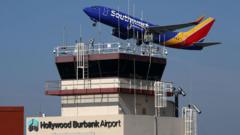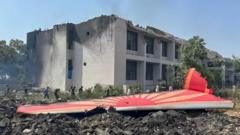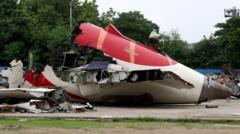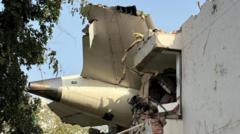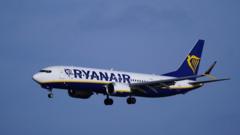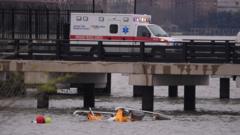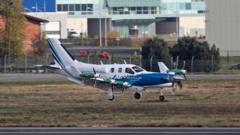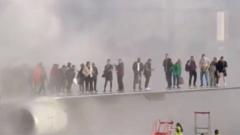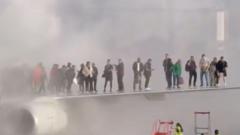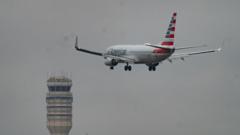Despite recent hiring initiatives, the ongoing communication failures raise concerns about air travel safety.
Air Traffic Control Chaos: Newark Airport Faces Communication Breakdown

Air Traffic Control Chaos: Newark Airport Faces Communication Breakdown
Newark Liberty International Airport struggles with staffing and technology, causing flight disruptions.
Air traffic controllers at Newark Liberty International Airport experienced a critical communication failure last week, wherein they were "unable to see, hear, or talk to" the planes under their management, as reported by a union representative. This incident, which occurred on April 28, has had severe repercussions, leading to multiple air traffic controllers taking trauma leave and resulting in hundreds of flights being delayed or diverted. On Monday alone, tracking service FlightAware recorded the cancellation of over 150 flights.
Newark, which is among New York's busiest airports, has been facing staffing shortages exacerbated by recent communication technology failures. The Federal Aviation Administration (FAA) acknowledged that "our antiquated air traffic control system is affecting our workforce," recognizing that the loss of communication with aircraft significantly impacts operational capacity.
Controllers seeking leave after the traumatic incident has highlighted the ongoing staffing crisis. The FAA confirmed that these employees have taken leave under specific provisions for traumatic events and noted that replacing them isn't an immediate solution given the extensive training required for new controllers.
In light of the ongoing issues, United Airlines has publicly stated its decision to cancel 35 flights daily from Newark, citing that the airport's infrastructure is not equipped to manage the traffic levels. United's CEO, Scott Kirby, pointed out that recent technology failures repeatedly led to diverted flights and significant operational challenges, further compounded by the resignation of over 20% of FAA controllers.
Furthermore, the National Air Traffic Controllers Association has remained tight-lipped about the number of employees taking leave. While the FAA is reportedly working on initiatives to boost hiring, including a commitment to bring in at least 2,000 new controllers this year, past staffing actions and the incident highlight the distressing condition of air traffic management at Newark.
In response to these hurdles, the U.S. Department of Transportation recently announced measures aimed at accelerating the hiring process of air traffic controllers. This includes efforts to recruit top candidates swiftly and improve retention of experienced personnel. However, until significant improvements are made in both staffing and technology, the future of Newark's air traffic operations remains uncertain.
Newark, which is among New York's busiest airports, has been facing staffing shortages exacerbated by recent communication technology failures. The Federal Aviation Administration (FAA) acknowledged that "our antiquated air traffic control system is affecting our workforce," recognizing that the loss of communication with aircraft significantly impacts operational capacity.
Controllers seeking leave after the traumatic incident has highlighted the ongoing staffing crisis. The FAA confirmed that these employees have taken leave under specific provisions for traumatic events and noted that replacing them isn't an immediate solution given the extensive training required for new controllers.
In light of the ongoing issues, United Airlines has publicly stated its decision to cancel 35 flights daily from Newark, citing that the airport's infrastructure is not equipped to manage the traffic levels. United's CEO, Scott Kirby, pointed out that recent technology failures repeatedly led to diverted flights and significant operational challenges, further compounded by the resignation of over 20% of FAA controllers.
Furthermore, the National Air Traffic Controllers Association has remained tight-lipped about the number of employees taking leave. While the FAA is reportedly working on initiatives to boost hiring, including a commitment to bring in at least 2,000 new controllers this year, past staffing actions and the incident highlight the distressing condition of air traffic management at Newark.
In response to these hurdles, the U.S. Department of Transportation recently announced measures aimed at accelerating the hiring process of air traffic controllers. This includes efforts to recruit top candidates swiftly and improve retention of experienced personnel. However, until significant improvements are made in both staffing and technology, the future of Newark's air traffic operations remains uncertain.

